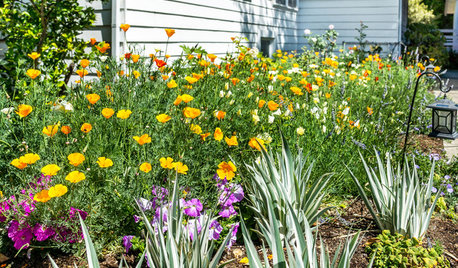mycorrhizae
maggiemae_2006
17 years ago
Featured Answer
Sort by:Oldest
Comments (54)
swanz
17 years agolast modified: 9 years agopablo_nh
17 years agolast modified: 9 years agoRelated Professionals
West Milford Landscape Architects & Landscape Designers · Benbrook Landscape Architects & Landscape Designers · San Juan Landscape Architects & Landscape Designers · Anderson Landscape Contractors · Anderson Landscape Contractors · Annandale Landscape Contractors · Barrington Landscape Contractors · Brooklyn Park Landscape Contractors · Thornton Landscape Contractors · Fort Pierce Decks, Patios & Outdoor Enclosures · Gastonia Decks, Patios & Outdoor Enclosures · Kernersville Decks, Patios & Outdoor Enclosures · Minneapolis Decks, Patios & Outdoor Enclosures · Reading Decks, Patios & Outdoor Enclosures · South Lyon Decks, Patios & Outdoor Enclosuressylviatexas1
17 years agolast modified: 9 years agoclaireplymouth z6b coastal MA
17 years agolast modified: 9 years agoKimmsr
17 years agolast modified: 9 years agogardengal48 (PNW Z8/9)
17 years agolast modified: 9 years agoluvorganic
17 years agolast modified: 9 years agonewtxan
17 years agolast modified: 9 years agotumblenes
17 years agolast modified: 9 years agoalphonse
17 years agolast modified: 9 years agopaulns
17 years agolast modified: 9 years agomaggiemae_2006
17 years agolast modified: 9 years agomaggiemae_2006
17 years agolast modified: 9 years agomaggiemae_2006
17 years agolast modified: 9 years agodonn_
17 years agolast modified: 9 years agoblutranes
17 years agolast modified: 9 years agomaggiemae_2006
17 years agolast modified: 9 years agoclaireplymouth z6b coastal MA
17 years agolast modified: 9 years agonewtxan
17 years agolast modified: 9 years agogardengal48 (PNW Z8/9)
17 years agolast modified: 9 years agoclaireplymouth z6b coastal MA
17 years agolast modified: 9 years agogardengal48 (PNW Z8/9)
17 years agolast modified: 9 years agomaggiemae_2006
17 years agolast modified: 9 years agoheptacodium
17 years agolast modified: 9 years agopaulns
17 years agolast modified: 9 years agomaggiemae_2006
17 years agolast modified: 9 years agoseamommy
17 years agolast modified: 9 years agomaggiemae_2006
17 years agolast modified: 9 years agoswanz
17 years agolast modified: 9 years agoclaireplymouth z6b coastal MA
17 years agolast modified: 9 years agoswanz
17 years agolast modified: 9 years agoVulture61
17 years agolast modified: 9 years agoswanz
17 years agolast modified: 9 years agoVulture61
17 years agolast modified: 9 years agoandrew_london
17 years agolast modified: 9 years agoclaireplymouth z6b coastal MA
17 years agolast modified: 9 years agomaggiemae_2006
17 years agolast modified: 9 years agoclaireplymouth z6b coastal MA
17 years agolast modified: 9 years agomaggiemae_2006
17 years agolast modified: 9 years agoandrew_london
17 years agolast modified: 9 years agomaggiemae_2006
17 years agolast modified: 9 years agoclaireplymouth z6b coastal MA
17 years agolast modified: 9 years agogardengal48 (PNW Z8/9)
17 years agolast modified: 9 years agoclaireplymouth z6b coastal MA
17 years agolast modified: 9 years agoandrew_london
17 years agolast modified: 9 years agobyron
17 years agolast modified: 9 years agohappyday
17 years agolast modified: 9 years agocelery
16 years agolast modified: 9 years agobillhill
16 years agolast modified: 9 years agohummersteve
9 years agolast modified: 9 years ago
Related Stories

EDIBLE GARDENSSummer Crop: How to Grow Blueberries
Plant blueberries in spring or fall for garden beauty through three seasons — and a sweet superfood in summer
Full Story
LANDSCAPE DESIGN10 Ideas for a Creative, Water-Conscious Yard
Check out these tips for a great-looking outdoor area that needs less water
Full Story
FARM YOUR YARDHow to Grow Vegetables in Containers
Get glorious vegetables and fruits on your patio with a pro’s guidance — including his personal recipe for potting mix
Full StoryMore Discussions







bpgreen